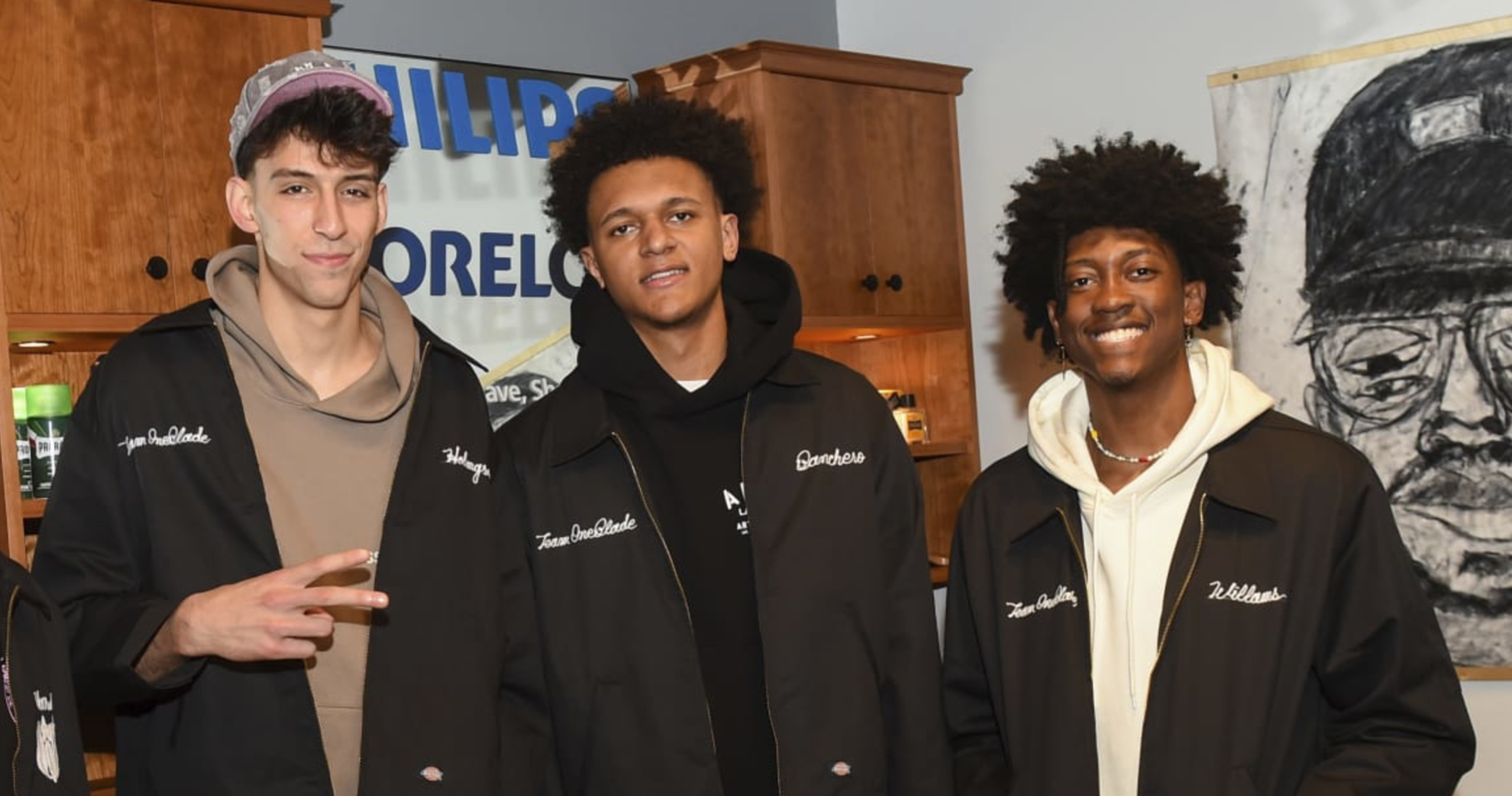Sports
Ranking the Highest Ceilings from the 2022 NBA Draft Class – Bleacher Report

We’re now a year removed from the 2022 NBA draft, which means we have a full season of video, production and numbers with which to analyze the class.
All of that makes it significantly easier to determine (or at least declare) the upside or ceiling of the players in that group.
Still, predicting the future is always going to take tons of subjectivity. Even with numbers, film, (in some cases) playoff appearances and more to guide us, there’s still some guesswork.
We’ve combined all of the above to rank the highest-ceiling players from the 2022 draft class.
Peruse the list of players drafted in 2022, and it becomes clear pretty quickly that this class has a chance to be special. And that means whittling it down to a top five is a challenge.
Though this slide is by no means exhaustive, below, you’ll find a few names of some of the toughest cuts.
Walker Kessler: By most advanced numbers, Walker Kessler was better than any other rookie in this class, but that had at least a little to do with him being able to focus on a fairly limited role. But even without bringing a ton of playmaking or shooting, he has Defensive Player of the Year upside, which should say a lot about the ceilings of the guys in the top five.
Keegan Murray: Like Kessler, Keegan Murray was almost immediately effective at the NBA level, because he brought what he could and generally stayed away from the rest. That meant high-level floor spacing (he shot 41.1 percent from deep) without a ton of off-the-dribble exploration. That’s not to say he can’t add that later, but others seem likelier to become offensive focal points.
Jaden Ivey: An explosive guard who can pretty consistently break the first line of defense, Jaden Ivey is one of this class’s more dynamic athletes. Terrible scoring efficiency is mildly concerning, but there’s more than enough time for the 21-year old to sort that out.
Jalen Duren: Still 19 years old, Jalen Duren was one of this rookie class’s more productive players by sheer force of will. Layering the effort he played with on top of explosive athleticism and a 7’5″ wingspan makes him look like a potentially menacing rim-runner and rim-protector.
Bennedict Mathurin: There was an extended period in the middle of the season when he struggled to hit shots, but Bennedict Mathurin looked like a possible heat-check-off-the-bench scorer during both the beginning and end of his rookie campaign. He needs to figure out how to shoot more consistently and keep defenses off guard by passing a bit more, but there could be 20-points-per-game upside here.
Age: 20
Class Rank in Career Wins Over Replacement Player: 36th
Shaedon Sharpe doesn’t really have the numbers on his side here. He averaged single-digit points per game for a team that was tanking, had low assist, steal and block rates and posted a paltry 1.1 assist-to-turnover ratio.
But numbers can’t always measure upside, and he showed plenty during his age-19 campaign to suggest he could develop into a star wing.
What is perhaps most impressive about Sharpe is the vertical athleticism that churned out enough highlights for the NBA to produce a 15-minute highlight reel. Few (if any) players in the league can get from the ground to the cup as explosively. And that’s an attribute that’s more natural than taught.
Add the stuff that can be coached to that, and you’re looking a potentially dynamic scorer.
But it’s not entirely the unmeasurables that pushed Sharpe into this top five. He also has a 7’0″ wingspan that almost seems unfair for someone with his bounce. And thanks in large part to an average three-point point percentage, he put up an above-average effective field-goal percentage in 2022-23.
If he can round out his game a bit, he has a chance to be very good.
Age: 20
Class Rank in Career Wins Over Replacement Player: 45th
Like Sharpe, the numbers really didn’t like Jabari Smith Jr.’s rookie campaign.
He had an even worse assist-to-turnover ratio (he handed out 101 dimes against 104 giveaways). And unlike Sharpe, his effective field-goal percentage (and true shooting percentage) was way below average.
A couple things drove him one spot higher on this list, though.
First of all, at 6’10” with a 7’1″ wingspan, Smith is bigger, which opens up defensive possibilities, including the option to play some small-ball 5.
His Year 1 numbers on that end suggest a little more upside too. In 2022-23, he averaged 6.6 defensive rebounds and 1.1 blocks per 75 possessions.
If he shoots the way his 42.0 three-point percentage from college suggests he can, he could be a dynamic three-and-D weapon.
Age: 21
Class Rank in Career Wins Over Replacement Player: N/A
Thanks to a foot injury suffered prior to the 2022-23 season, we’ve yet to see Chet Holmgren in action, but he has the potential to provide what Kessler does on defense while also adding quite a bit more on the other end.
At least in college and during his limited summer league reps, Holmgren showed ball skills and passing ability that’s still pretty rare for a big man (even if Nikola Jokić is popularizing playmaking from the center spot).
And what’s perhaps most intriguing about Holmgren from an offensive perspective is his jumper. At Gonzaga, he made 39.0 percent of his three-point attempts.
Ultimately, though, his ceiling is tied to his defensive impact. His length (7’0″ with a 7’6″ wingspan) and timing on that end could have him making All-Defense teams early in his career.
Age: 22
Class Rank in Career Wins Over Replacement Player: 2nd
Jalen Williams is a little older than some of the others detailed here, and that’s typically a knock against a prospect in exercises like this, but he showed enough in his rookie season to put less stock in that disadvantage.
It took a bit of time for Williams to ascend above several other young Oklahoma City Thunder players, but once he did, he was one of the game’s better wings, regardless of age.
Over his last 20 games of the season, he put up 19.0 points, 5.3 rebounds and 4.5 assists, while shooting 44.6 percent from three on a team with two other ball-handlers using plenty of possessions (Shai Gilgeous-Alexander and Josh Giddey).
With his size (7’2″ wingspan), patience as a creator and unselfishness, Williams has the potential to be a game-changing playmaker and scorer.
Age: 20
Class Rank in Career Wins Over Replacement Player: 7th
Dreadfully inefficient shooting impacted his advanced numbers, but that had a lot to do with an almost impossibly cold February in which he shot 1-of-33 from three.
That kind of a streak isn’t likely to repeat itself, especially when you watch Banchero shoot. His form looks fine. In time, he should be able to develop into a more consistent jump shooter.
What’s more important than that is that Banchero is ahead of his age when it comes to drawing fouls. His 7.4 free-throw attempts per game is tied for the eighth highest average for a rookie in the three-point era.
His playmaking and passing for a player his size are hugely encouraging too. He finished seventh of all time among 6’10”-plus rookies in assists per game at 3.7.
Doing all that as the offensive alpha for a young team that was above .500 for the last 57 games of the season is worth something that advanced numbers don’t always measure either.
And when you consider his long-term versatility (Banchero has played almost exclusively at the 5 at the FIBA World Cup), it’s not that hard to justify slotting him in here.









